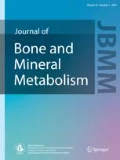Abstract.
The purpose of this study was to investigate the associations of tooth loss with skeletal bone mass, years since menopause, educational level, current smoking status, dietary calcium intake, and number of pregnancies in postmenopausal osteoporotic women in Turkey. The study population consisted of 1171 postmenopausal women aged 40–86 years (mean age, 61.19 ± 7.28 years). A detailed history was obtained from all women, including relevant lifestyle parameters, risk factors, and measurements of weight and height. Women were separated into three groups according to the number of teeth remaining as group 1 (edentulous, 457 women), group 2 (10 or fewer teeth, 232 women), and group 3 (more than 10 teeth remaining, 482 women). There was no significant difference among the three groups in mean age and menopausal age (P < 0.05). Body mass index of group 1 was significantly higher than that of group 2 (P < 0.01). Educational level was significantly different between three groups: groups 1 and 2 (P < 0.001), groups 1 and 3 (P < 0.0001), and groups 2 and 3 (P < 0.001). Educational level was lowest in group 1 and highest in group 3. Despite a low ratio of cigarette smoking in general, a smoking habit was most prevalent in group 3 and least in group 2. The ratio of women receiving adequate calcium was significantly lower in group 1 than in other groups (P < 0.001); mean calcium intake was similar in all groups. The number of pregnancies was significantly higher in group 1 than in other groups (P < 0.001). Lumbar bone mineral density (BMD) of group 1 was significantly lower than that of groups 2 and 3 (P < 0.001). Although no significant difference was found between groups 1 and 3, femoral neck BMD of group 2 was less than in others, and differences between groups 1 and 2 and between groups 2 and 3 (P < 0.001) were significant. Lumbar bone mineral content (BMC) of group 1 was significantly lower than that of groups 2 and 3 (P < 0.001), and lumbar BMC in group 2 was significantly higher than in group 3 (P < 0.05). Femoral neck BMC in group 1 was significantly higher than in groups 2 and 3 (P < 0.001). In conclusion, lumbar BMD and BMC in the edentulous group were significantly lower, whereas femoral neck BMD and BMC were significantly higher in edentulous group compared with the others. Our findings indicated that improvement in lifestyle factors and nutritional strategies for the treatment and prevention of osteoporosis may have additional benefit in reducing tooth loss.
Similar content being viewed by others
Author information
Authors and Affiliations
Additional information
Received: February 18, 2002 / Accepted: June 21, 2002
Offprint requests to: A. Gur
About this article
Cite this article
Gur, A., Nas, K., Kayhan, O. et al. The relation between tooth loss and bone mass in postmenopausal osteoporotic women in Turkey: a multicenter study. J Bone Miner Metab 21, 43–47 (2003). https://doi.org/10.1007/s007740300007
Issue Date:
DOI: https://doi.org/10.1007/s007740300007




